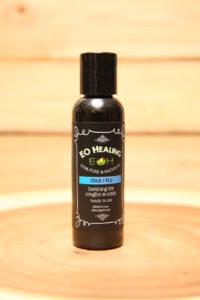With the cold and flu season in full swing, it is important that we learn how to use essential oils safely before inviting them into our natural healing repertoire. So let’s look at how essential oils can find a place in your home pharmacy toolkit. You will be amazed at how quickly and effectively you will be able to use them in your day to day life.
What are essential oil?
Essential oils are volatile aromatic compounds from highly concentrated natural constituents found in plants. They give the plant its characteristic odor and carry many of the healing components from the plant parts.
Through their healing actions, essential oils can help re-balance your system, reinforce your immune system and affect your emotional state.
Preparing essential oils
Before applying essential oils on your baby or toddler, it is important to understand dilution ratios and application methods. Dilution of an essential oil with a carrier oil – such as olive oil, coconut oil, grapeseed oil or almond oil – is an important step in the safe topical application of these powerful fluids, as the application of undiluted essential oil can cause rashing or burning of the skin.
Dilution Ratios
| Age | Dilution | Method |
| 6 m – 24 m | 0.25%* | For local topical area |
| 2 years – 6 years | 0.5% | For Local topical area |
* For example: .25% = 1 drop per 4 teaspoons of carrier oil
Note: Essential oils should not be used on or around children under the age of 6 months due to their sensitive systems.
Application methods
The effect of essential oils on your body and mind vary depending on the application method you choose.
Topical application is typically used for local issues such as muscle soreness, cough, congestion, colic, or spot treatment for skin issues. Diffusion of oils, on the other hand, involves the dispersion of a mist that gently fills the air with the aroma and healing benefits of your chosen oil. This method is most effective for emotional regulation, enhancement of focus, respiratory issues, or general cold and flu symptoms. Try the Wellness Collection




Click here to visit the shop
Where to apply essential oils?
How does one know exactly where to apply the oils? Is it best to inhale or should the diluted oil be applied topically on the chest? or the feet?
If your baby has never been exposed to essential oils, I suggest either wearing the oils you’d like to try on yourself, or diffusing them into the air, in order to introduce your baby to the strength of their aromas. Start with single oils such as lavender, chamomile roman or citrus oils first. If your baby tolerates the scent of the oils well, you may using them topically.
Always dilute the essential oils prior to topical application according to the ratio appropriate for the age of your child (see chart above). Start by applying the oils on the soles of their feet, one of the parts of the body considered least sensitive, and thus a good testing ground. Wait at least 24 hours for any signs of allergies or sensitivities. If irritation occurs, wash the area with warm soap and water, then rub some carrier oil over the application area to prevent the irritation from getting worse.
After ensuring there are no adverse reaction to the oil, you can apply on other parts of the body. Choose the location based on the desired effect. A few areas of interest include the chest(cough and congestion), back of the neck (headache or muscle tension), crown area (calming, congestion), and behind the ear lobes (sleep, headache).
Essential oils when safely used, are wonderful tools that can help support the wellness of your entire family.
